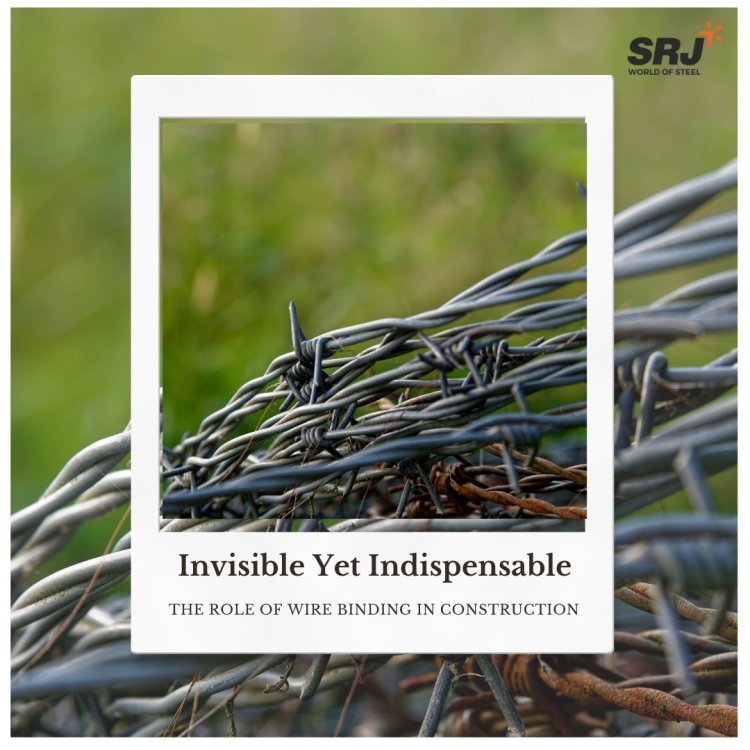The Importance of Wire Binding and Construction Rings
Wire binding plays a crucial role in reinforced concrete construction, ensuring structural stability by holding reinforcement bars securely in place. Construction rings further enhance durability by maintaining proper spacing and alignment. Using high-quality binding wire and construction rings improves safety, strength, and longevity in any project.

Binding wire, an often-overlooked hero, holds together the intricate network of reinforcement that goes into every strong concrete construction. This necessary building component is vital to maintaining both structural soundness and high-quality construction.
Understanding Binding Wire Fundamentals
Binding wire serves as the crucial connector that holds reinforcement bars together before concrete pouring. Made from high-quality annealed steel, this versatile material ensures reinforcement components maintain their designed positions throughout the construction process.
Types of Wire Binding Methods
Different construction projects require specific wire binding techniques. The most common methods include:
- Single Loop Binding: Perfect for light-duty applications, this method provides adequate strength while conserving material.
- Double Loop Binding: Offers enhanced stability for heavy-duty applications where additional security is crucial.
- Figure-Eight Binding: Provides superior grip and prevents slippage in critical structural elements.
Construction Rings and Their Relationship with Binding Wire
Construction rings work in tandem with binding wire to create robust reinforcement assemblies. These rings serve multiple purposes:
- Maintaining proper spacing between reinforcement bars
- Ensuring adequate concrete coverage
- Supporting the overall reinforcement structure
The combination of properly installed construction rings and secure wire binding creates a stable framework for concrete placement.
Quality Considerations for Binding Wire
Several factors determine binding wire quality:
- Material Composition: High-grade binding wire contains the optimal balance of strength and flexibility, ensuring easy installation while maintaining durability.
- Gauge Selection: Different applications require specific wire gauges. Professional contractors understand when to use lighter or heavier gauge binding wire based on structural requirements.
- Surface Treatment: Quality binding wire often features special coatings that enhance corrosion resistance and handling characteristics.
Installation Best Practices
Proper wire binding techniques significantly impact construction quality:
Preparation
- Clean wire surfaces before binding
- Ensure construction rings are properly positioned
- Verify reinforcement spacing meets specifications
Execution
- Maintain consistent tension during wire binding
- Secure ends properly to prevent unwinding
- Check stability after installation
Cost-Benefit Analysis
While material costs matter, considering the long-term benefits of quality binding wire remains crucial:
- Reduced risk of reinforcement displacement
- Better concrete consolidation
- Enhanced structural integrity
- Lower maintenance requirements
Safety Considerations
Proper wire binding directly impacts construction safety:
During Construction
- Prevents reinforcement cage collapse
- Maintains proper concrete coverage
- Ensures worker safety during concrete placement
Long-term Safety
- Contributes to structural stability
- Helps maintain design specifications
- Enhances building durability
Environmental Factors
Different environmental conditions affect binding wire performance:
- Coastal Areas: Salt exposure requires special consideration for wire binding materials and construction rings.
- Seismic Zones: Enhanced binding techniques may be necessary to ensure stability during earthquakes.
- Temperature Extremes: Special attention to thermal expansion and contraction helps prevent future issues.
Choosing the Right Products
When selecting binding wire and construction rings, consider:
- Project specifications
- Environmental conditions
- Load requirements
- Installation conditions
- Budget constraints
Future Trends in Construction Materials
While basic wire binding principles remain constant, innovations continue to emerge:
- Enhanced coating technologies
- Pre-fabricated solutions
- Sustainable material options
- Improved installation tools
Making Informed Decisions
The success of construction projects often depends on seemingly small details. Choosing appropriate binding wire and construction rings, while implementing proper wire binding techniques, helps ensure structural integrity and project success.
High-quality materials may initially cost more, but their durability, ease of installation, and long-term performance make them worthwhile investments. By focusing on proper material selection and installation techniques, construction professionals may create projects that last.
What's Your Reaction?













